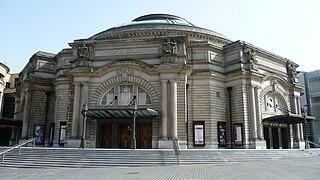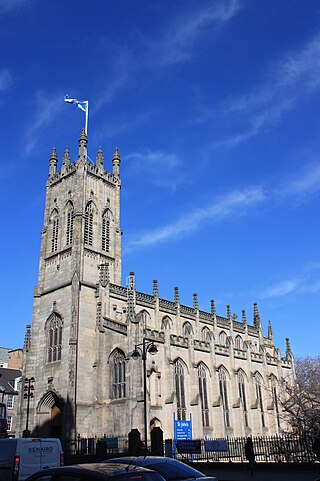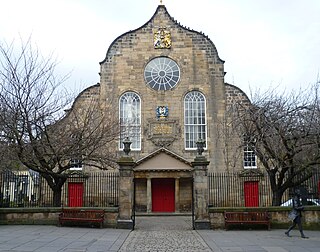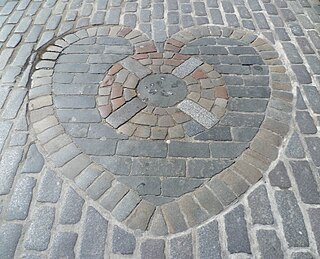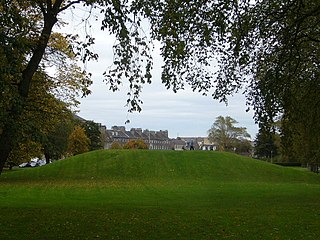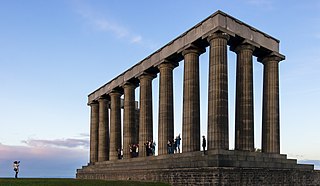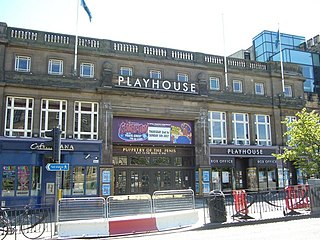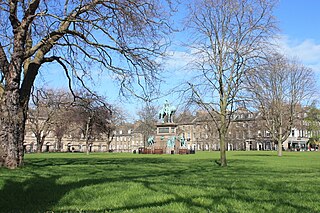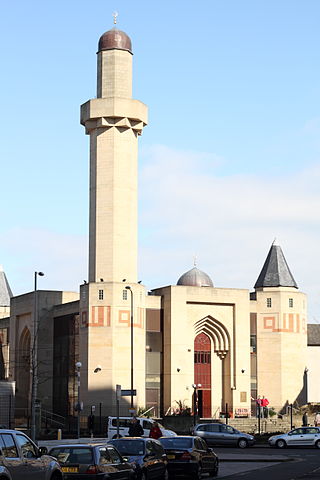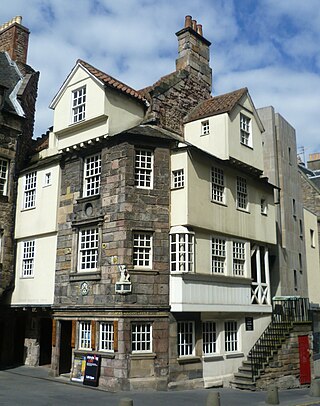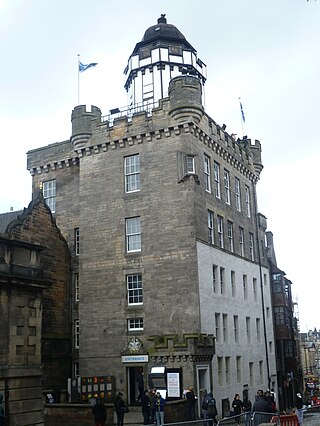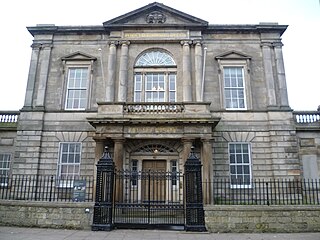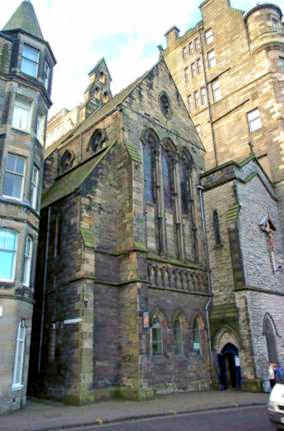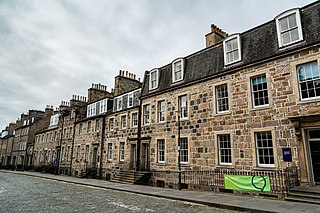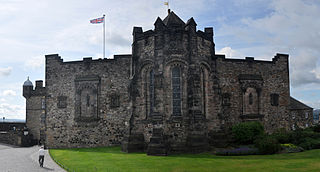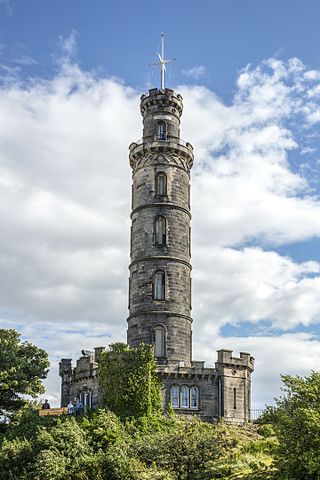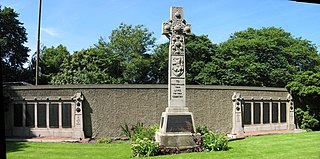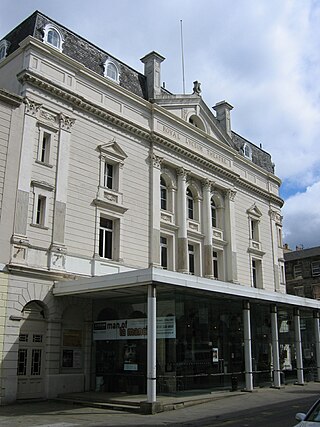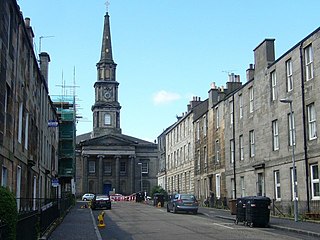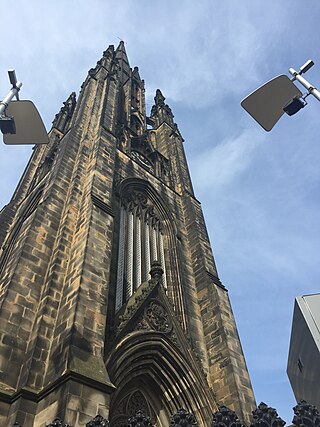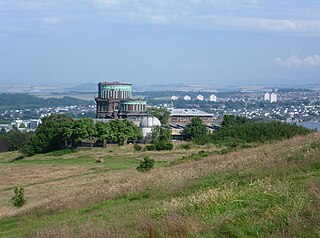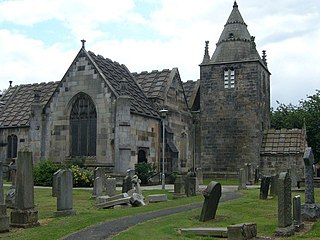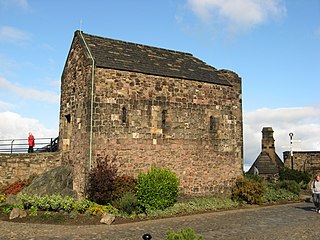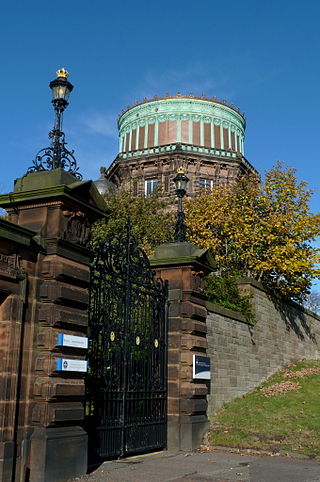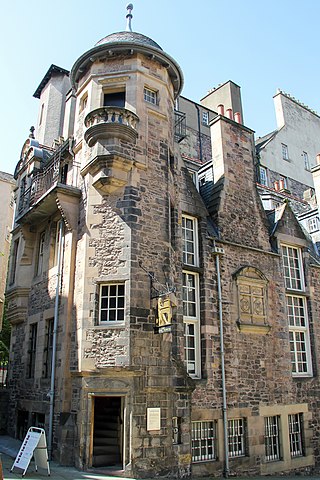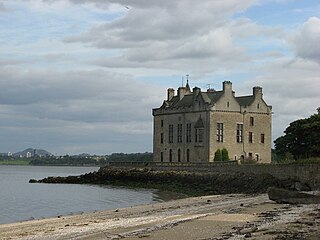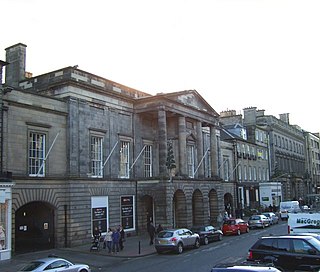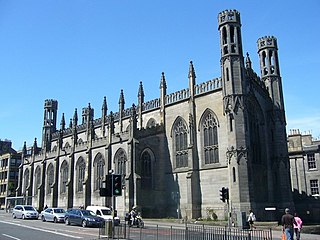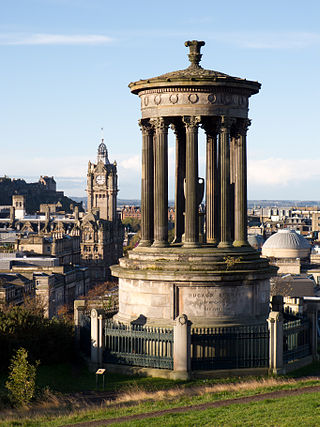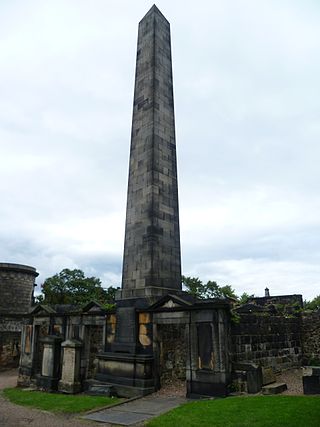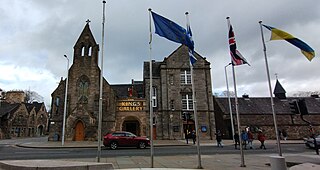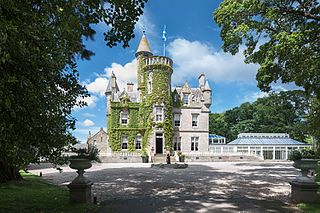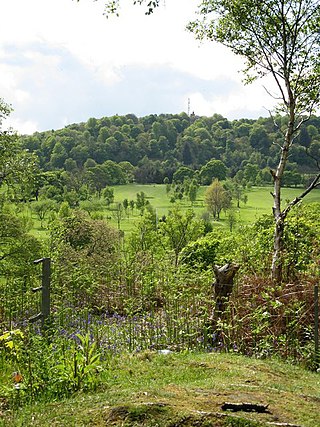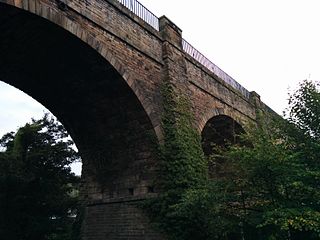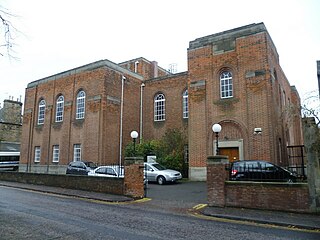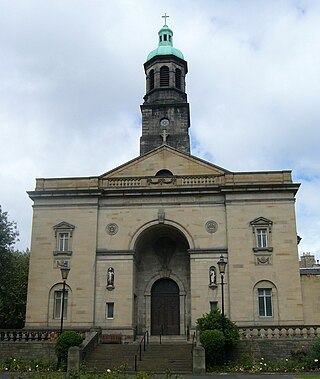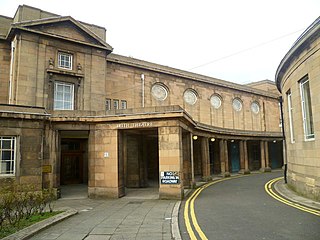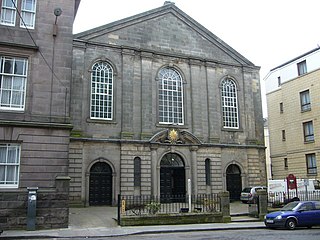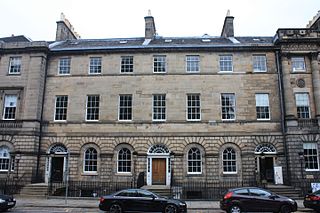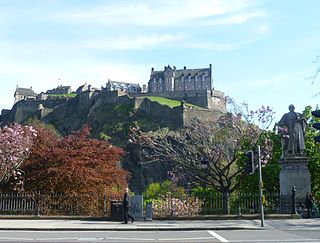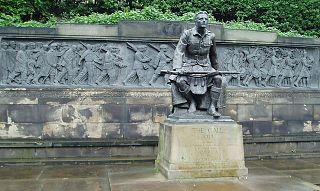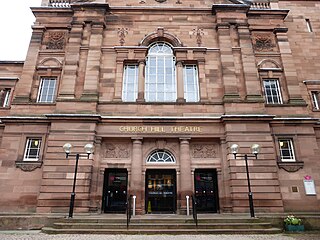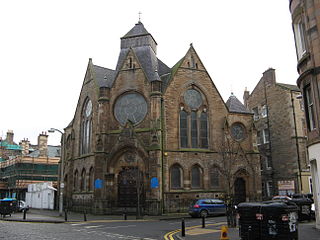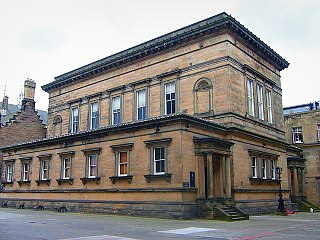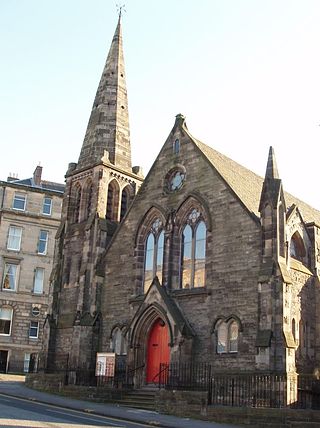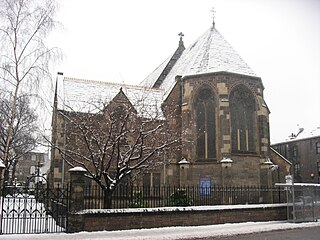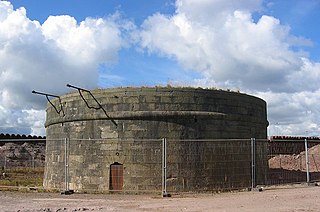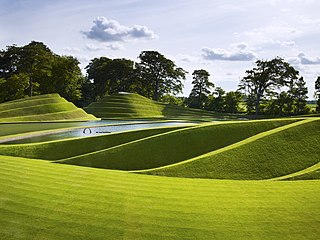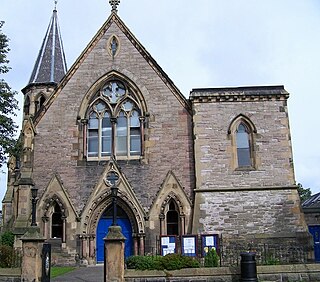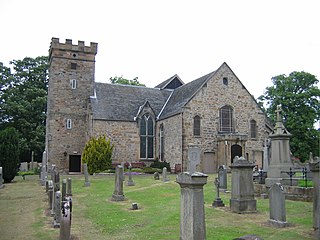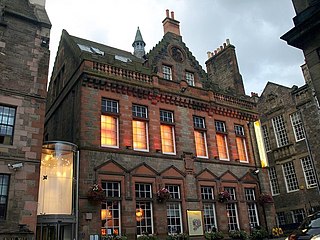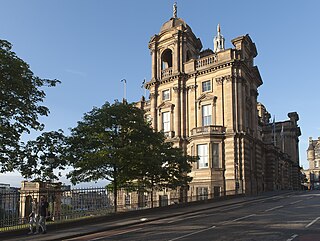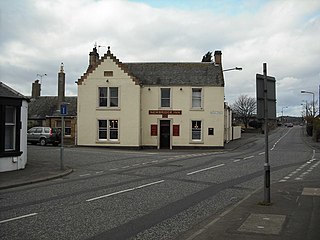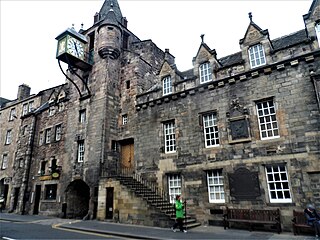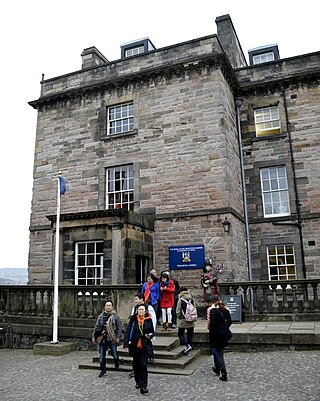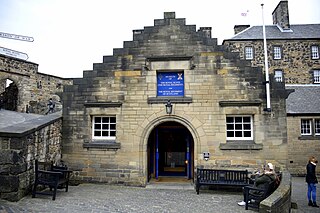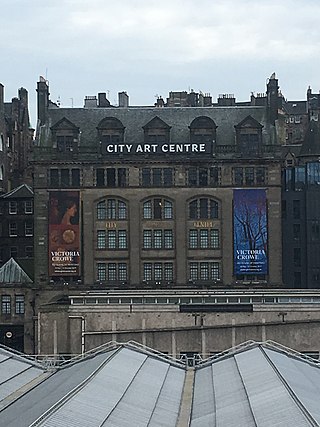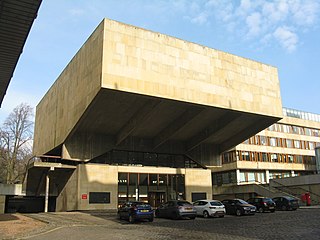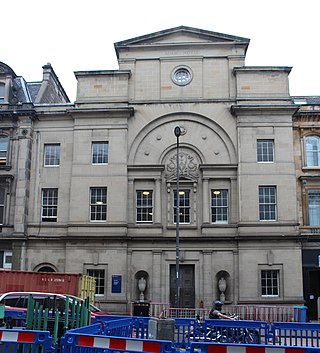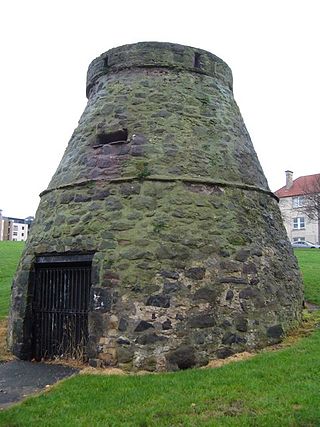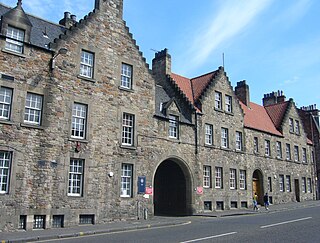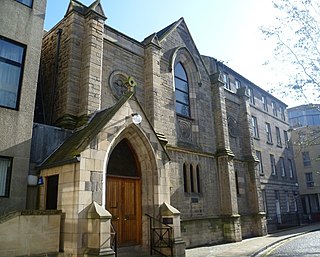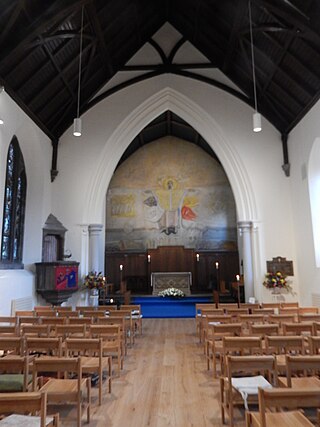100 Sights in City of Edinburgh, United Kingdom (with Map and Images)
Legend
Welcome to your journey through the most beautiful sights in City of Edinburgh, United Kingdom! Whether you want to discover the city's historical treasures or experience its modern highlights, you'll find everything your heart desires here. Be inspired by our selection and plan your unforgettable adventure in City of Edinburgh. Dive into the diversity of this fascinating city and discover everything it has to offer.
Sightseeing Tours in City of Edinburgh1. Edinburgh Castle
Edinburgh Castle is a historic castle in Edinburgh, Scotland. It stands on Castle Rock, which has been occupied by humans since at least the Iron Age. There has been a royal castle on the rock since the reign of Malcolm III in the 11th century, and the castle continued to be a royal residence until 1633. From the 15th century, the castle's residential role declined, and by the 17th century it was principally used as a military garrison. Its importance as a part of Scotland's national heritage was recognised increasingly from the early 19th century onwards, and various restoration programmes have been carried out over the past century and a half.
2. St Giles' Cathedral
St Giles' Cathedral, or the High Kirk of Edinburgh, is a parish church of the Church of Scotland in the Old Town of Edinburgh. The current building was begun in the 14th century and extended until the early 16th century; significant alterations were undertaken in the 19th and 20th centuries, including the addition of the Thistle Chapel. St Giles' is closely associated with many events and figures in Scottish history, including John Knox, who served as the church's minister after the Scottish Reformation.
3. Greyfriars Bobby
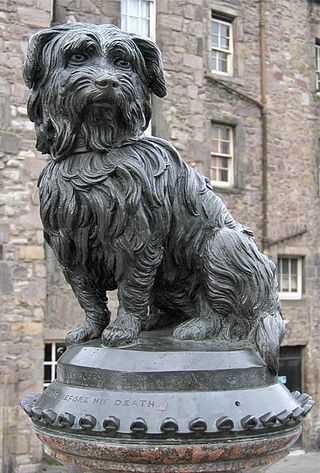
Greyfriars Bobby was a Skye Terrier or Dandie Dinmont Terrier who became known in 19th-century Edinburgh for spending 14 years guarding the grave of his owner until he died on 14 January 1872. The story continues to be well known in Scotland, through several books and films. A prominent commemorative statue and nearby graves are a tourist attraction.
4. Dean Cemetery
The Dean Cemetery is a historically important Victorian cemetery north of the Dean Village, west of Edinburgh city centre, in Scotland. It lies between Queensferry Road and the Water of Leith, bounded on its east side by Dean Path and on its west by the Dean Gallery. A 20th-century extension lies detached from the main cemetery to the north of Ravelston Terrace. The main cemetery is accessible through the main gate on its east side, through a "grace and favour" access door from the grounds of Dean Gallery and from Ravelston Terrace. The modern extension is only accessible at the junction of Dean Path and Queensferry Road.
5. Quintinshill Rail Disaster Memorial
The Quintinshill rail disaster was a multi-train rail crash which occurred on 22 May 1915 outside the Quintinshill signal box near Gretna Green in Dumfriesshire, Scotland. It resulted in the deaths of over 200 people and remains the worst rail disaster in British history.
6. Arthur's Seat
Arthur's Seat is an ancient extinct volcano that is the main peak of the group of hills in Edinburgh, Scotland, which form most of Holyrood Park, described by Robert Louis Stevenson as "a hill for magnitude, a mountain in virtue of its bold design". It is situated just to the east of the city centre, about 1 mile (1.6 km) to the east of Edinburgh Castle. The hill rises above the city to a height of 250.5 m (822 ft), provides excellent panoramic views of the city and beyond, is relatively easy to climb, and is popular for hillwalking. Though it can be climbed from almost any direction, the easiest ascent is from the east, where a grassy slope rises above Dunsapie Loch. At a spur of the hill, Salisbury Crags has historically been a rock climbing venue with routes of various degrees of difficulty. Rock climbing was restricted to the South Quarry, but access was banned altogether in 2019 by Historic Environment Scotland.
7. HMY Britannia
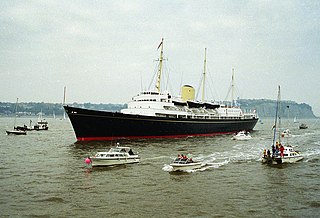
Her Majesty's Yacht Britannia is the former royal yacht of the British monarchy. She was in their service from 1954-97. She was the 83rd such vessel since King Charles II acceded to the throne in 1660, and is the second royal yacht to bear the name, the first being the racing cutter built for the Prince of Wales in 1893. During her 43-year career, the yacht travelled more than a million nautical miles around the world to more than 600 ports in 135 countries. Now retired from royal service, Britannia is permanently berthed at Ocean Terminal, Leith in Edinburgh, Scotland, where it is a visitor attraction with over 300,000 visits each year.
8. Calton Hill
Calton Hill is a hill in central Edinburgh, Scotland, situated beyond the east end of Princes Street and included in the city's UNESCO World Heritage Site. Views of, and from, the hill are often used in photographs and paintings of the city.
9. St Mary's Episcopal Cathedral
The Cathedral Church of Saint Mary the Virgin, commonly known as St Mary's Episcopal Cathedral, is a cathedral of the Scottish Episcopal Church in the West End of Edinburgh, Scotland; part of the worldwide Anglican Communion.
Wikipedia: St Mary's Cathedral, Edinburgh (Episcopal) (EN), Website
10. Holyrood Park
Holyrood Park is a royal park in central Edinburgh, Scotland about 1 mile to the east of Edinburgh Castle. It is open to the public. It has an array of hills, lochs, glens, ridges, basalt cliffs, and patches of gorse, providing a wild piece of highland landscape within its 650-acre (260 ha) area. The park is associated with the Palace of Holyroodhouse and was formerly a royal hunting estate. The park was created in 1541 when James V had the ground "circulit about Arthurs Sett, Salisborie and Duddingston craggis" enclosed by a stone wall.
11. Royal Botanic Garden Edinburgh
The Royal Botanic Garden Edinburgh (RBGE) is a scientific centre for the study of plants, their diversity and conservation, as well as a popular tourist attraction. Founded in 1670 as a physic garden to grow medicinal plants, today it occupies four sites across Scotland—Edinburgh, Dawyck, Logan and Benmore—each with its own specialist collection. The RBGE's living collection consists of more than 13,302 plant species, whilst the herbarium contains in excess of 3 million preserved specimens.
12. Bedlam Theatre
Bedlam Theatre is a theatre in the Old Town of Edinburgh, Scotland. The building was completed in 1848 for the New North Free Church. After closing as a church in 1941, the building served as a chaplaincy centre and then a store for the University of Edinburgh before reopening in 1980 as the student-run theatre of Edinburgh University Theatre Company (EUTC), operating during Edinburgh Fringe festival as venue 49.
13. Scott Monument
The Scott Monument is a Victorian Gothic monument to Scottish author Sir Walter Scott. It is the second-largest monument to a writer in the world after the José Martí monument in Havana. It stands in Princes Street Gardens in Edinburgh, opposite the former Jenners building on Princes Street and near Edinburgh Waverley Railway Station, which is named after Scott's Waverley novels.
14. National Gallery

The National is the national art gallery of Scotland. It is located on The Mound in central Edinburgh, close to Princes Street. The building was designed in a neoclassical style by William Henry Playfair, and first opened to the public in 1859.
15. Wentworth Elm
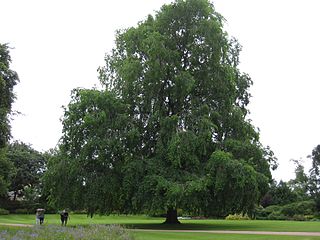
Ulmus × hollandica 'Wentworthii Pendula', commonly known as the Wentworth Elm or Wentworth Weeping Elm, is a cultivar with a distinctive weeping habit that appears to have been introduced to cultivation towards the end of the 19th century. The tree is not mentioned in either Elwes and Henry's or Bean's classic works on British trees. The earliest known references are Dutch and German, the first by de Vos in Handboek tot de praktische kennis der voornaamste boomen (1890). At about the same time, the tree was offered for sale by the Späth nursery of Berlin as Ulmus Wentworthi pendula Hort.. The 'Hort.' in Späth's 1890 catalogue, without his customary label "new", confirms that the tree was by then in nurseries as a horticultural elm. De Vos, writing in 1889, states that the Supplement to Volume 1 includes entries announced since the main volume in 1887, putting the date of introduction between 1887 and 1889.
16. Mons Meg
Mons Meg is a medieval bombard in the collection of the Royal Armouries, on loan to Historic Environment Scotland and located at Edinburgh Castle in Scotland. It has a barrel diameter of 20 inches (510 mm), making it one of the largest cannons in the world by calibre.
17. Heart Of Midlothian War Memorial
Haymarket is an area of Edinburgh, Scotland. It is in the west of the city centre and is the junction of several main roads, notably Dalry Road, Corstorphine Road, and Shandwick Place. Haymarket contains a number of pubs, cafés and restaurants.
18. Traverse Theatre
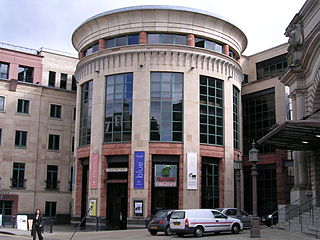
The Traverse Theatre is a theatre in Edinburgh, Scotland. It was founded as The Traverse Theatre Club in 1962 by John Calder, John Malcolm, Jim Haynes, Richard Demarco, Terry Lane, Andrew Muir, John Martin and Sheila Colvin.
19. Old Town
The Old Town is the name popularly given to the oldest part of Scotland's capital city of Edinburgh. The area has preserved much of its medieval street plan and many Reformation-era buildings. Together with the 18th/19th-century New Town, and West End, it forms part of a protected UNESCO World Heritage Site.
20. Trinity Apse
Trinity College Kirk was a royal collegiate church in Edinburgh, Scotland. The kirk and its adjacent almshouse, Trinity Hospital, were founded in 1460 by Mary of Guelders in memory of her husband, King James II who had been killed at the siege of Roxburgh Castle that year. Queen Mary was interred in the church, until her coffin was moved to Holyrood Abbey in 1848.
21. North & South Leith Parish Church
South Leith Parish Church, originally the Kirk of Our Lady, St Mary, is a congregation of the Church of Scotland. It is the principal church and congregation in Leith, in Edinburgh. Its kirkyard is the burial place for John Home and John Pew, the man from whom the author Robert Louis Stevenson reputedly derived the character of Blind Pew in the novel Treasure Island. 18th-century Scottish Episcopal Church bishop and historian Robert Forbes also lies buried beneath the church floor. The church has been repaired, used as an ammunition store and reconstructed but still retains the basic layout of the nave of the old church.
22. St Mary's Metropolitan Cathedral (RC)
The Metropolitan Cathedral of Our Lady of the Assumption, also known as St Mary's Metropolitan Cathedral, is a Roman Catholic church in Edinburgh, Scotland. It is the seat of the Archbishop of Saint Andrews and Edinburgh and the mother church of Scots Catholicism. The cathedral church is located at the East End of New Town in the city center.
23. Usher Hall
The Usher Hall is a concert hall in the West End of Edinburgh, Scotland. The hall is owned and managed by the City of Edinburgh Council, and has hosted concerts and events since its construction in 1914.
24. Church of St John the Evangelist
The Church of St John the Evangelist is a Scottish Episcopal church in the centre of Edinburgh, Scotland. It is sited at the west end of Princes Street at its junction with Lothian Road, and is protected as a category A listed building.
25. Canongate Kirk
The Kirk of the Canongate, or Canongate Kirk, serves the Parish of Canongate in Edinburgh's Old Town, in Scotland. It is a congregation of the Church of Scotland. The parish includes the Palace of Holyroodhouse and the Scottish Parliament. It is also the parish church of Edinburgh Castle, even though the castle is detached from the rest of the parish. The wedding of Zara Phillips, the Queen's granddaughter, and former England rugby captain Mike Tindall took place at the church on 30 July 2011. The late Queen Elizabeth II used to attend services in the church on some of her frequent visits to Edinburgh.
26. Scottish National Portrait Gallery
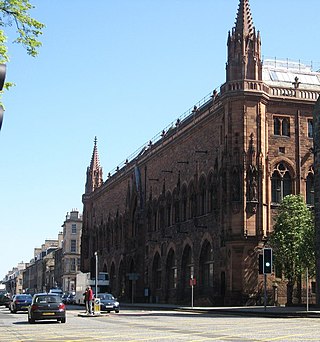
National Galleries Scotland: Portrait is an art museum on Queen Street, Edinburgh. Portrait holds the national collections of portraits, all of which are of, but not necessarily by, Scots. It also holds the Scottish National Photography Collection.
27. Scottish National Gallery of Modern Art One
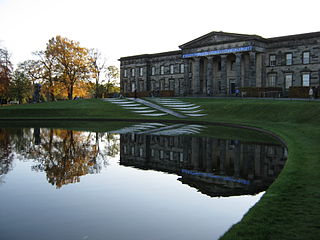
National Galleries Scotland: Modern is part of National Galleries Scotland, which is based in Edinburgh, Scotland. The Modern houses the collection of modern and contemporary art dating from about 1900 to the present in two buildings, Modern One and Modern Two, that face each other on Belford Road to the west of the city centre.
Wikipedia: Scottish National Gallery of Modern Art (EN), Website
28. Heart of Midlothian
The Heart of Midlothian is a mosaic located outside St Giles' Cathedral in Edinburgh. The heart marks the location of the entrance to Edinburgh's Old Tolbooth which was demolished in 1817. Locals will often spit upon the heart as a sign of good luck. While the tradition is now one of good luck, it was originally believed to be done as a sign of disdain for the executions which took place within the Old Tolbooth.
29. Leith Links East
Leith Links is the principal open space within Leith, the docks district of Edinburgh, Scotland. This public park is divided by a road into two main areas, a western section and an eastern section, both being largely flat expanses of grass bordered by mature trees. Historically it covered a wider area extending north as far as the shoreline of the Firth of Forth. This area of grass and former sand-dunes was previously used as a golf links.
30. National Monument of Scotland
The National Monument of Scotland, on Calton Hill in Edinburgh, is Scotland's national memorial to the Scottish soldiers and sailors who died fighting in the Napoleonic Wars. It was intended, according to the inscription, to be "A Memorial of the Past and Incentive to the Future Heroism of the Men of Scotland".
31. Edinburgh Playhouse
Edinburgh Playhouse is a theatre in Edinburgh, Scotland. With 3,059 seats it is the largest in Scotland and second largest theatre in the United Kingdom, after the Hammersmith Apollo. The theatre is owned by Ambassador Theatre Group.
32. Craigmillar Castle
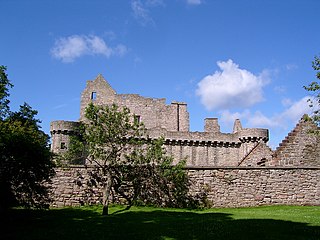
Craigmillar Castle is a ruined medieval castle in Edinburgh, Scotland. It is three miles (4.8 km) south-east of the city centre, on a low hill to the south of the modern suburb of Craigmillar. The Preston family of Craigmillar, the local feudal barons, began building the castle in the late 14th century and building works continued through the 15th and 16th centuries. In 1660, the castle was sold to Sir John Gilmour, Lord President of the Court of Session, who breathed new life into the ageing castle. The Gilmours left Craigmillar in the 18th century for a more modern residence, nearby Inch House, and the castle fell into ruin. It is now in the care of Historic Environment Scotland as a scheduled monument, and is open to the public.
33. Charlotte Square Gardens
Charlotte Square is a garden square in Edinburgh, Scotland, part of the New Town, designated a UNESCO World Heritage Site. The square is located at the west end of George Street and was intended to mirror St. Andrew Square in the east. The gardens, one of the collection of New Town Gardens, are private and not publicly accessible.
34. Edinburgh Central Mosque
Edinburgh Central Mosque is located on Potterrow near the University of Edinburgh central area and the National Museum of Scotland. The mosque and Islamic centre was designed by Dr. Basil Al Bayati, and took more than six years to complete at a cost of £3.5M. The main hall can hold over one thousand worshippers, with women praying on a balcony overlooking the hall. The mosque holds chandeliers and a vast carpet, with very little furniture.
35. New Town Church
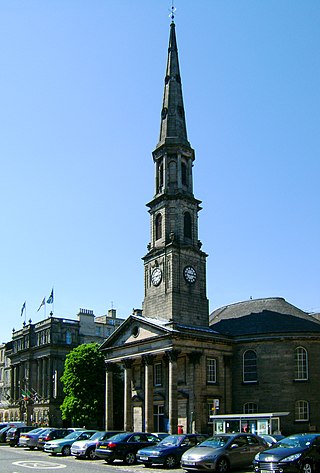
Edinburgh: The New Town Church of Scotland serves Edinburgh's New Town, in Scotland. It is a congregation of the Church of Scotland, formed on 1 February 2024 by the union of St Andrew's & St George's West and Greenside Church.
36. John Knox House
John Knox House, popularly known as John Knox's House, is a historic house in Edinburgh, Scotland, reputed to have been owned and lived in by Protestant reformer John Knox during the 16th century. Although his name became associated with the house, he appears to have lived in Warriston Close where a plaque indicates the approximate site of his actual residence.
37. Camera Obscura & World of Illusions
Camera Obscura & World of Illusions is a tourist attraction located in Outlook Tower on the Castlehill section of the Royal Mile close to Edinburgh Castle. The original attraction was founded by entrepreneur Maria Theresa Short in 1835 and was exhibited on Calton Hill. Outlook Tower has been a museum since the late 1890s and is currently home to many interactive exhibits, including the original Camera Obscura.
38. Dynamic Earth

Dynamic Earth is a not-for-profit visitor attraction and science centre in Edinburgh, and is Scotland's largest interactive visitor attraction. It is located in Holyrood, beside the Scottish Parliament building and at the foot of Salisbury Crags. It is a registered charity under Scottish law and is owned as The Dynamic Earth Charitable Trust. The centre was opened by Queen Elizabeth II in 1999.
39. Trinity House
Trinity House, 99 Kirkgate, is a building in Leith, Edinburgh, Scotland, which was a guild hall, customs house, and centre for maritime administration and poor relief. In the Late Middle Ages and Early Modern Era it also served as an almshouse and hospital. Now in state care, it houses a maritime museum. It is a category A listed building.
40. Old Saint Paul's
Old Saint Paul's is an historic church of the Scottish Episcopal Church in the heart of Edinburgh's Old Town in Scotland. It is one of the original congregations of the Scottish Episcopal Church, part of the Anglican Communion, which evolved with the adoption of Presbyterian governance by the established Church of Scotland.
41. George Square Gardens
George Square is a city square in Edinburgh, Scotland. It is in the south of the city centre, adjacent to the Meadows. It was laid out in 1766 outside the overcrowded Old Town, and was a popular residential area for Edinburgh's better-off citizens. In the 1960s, much of the square was redeveloped by the University of Edinburgh, although the Cockburn Association and the Georgian Group of Edinburgh protested. Most but not all buildings on the square now belong to the university. Principal buildings include the Gordon Aikman Lecture Theatre, Edinburgh University Library, 40 George Square and Appleton Tower.
42. The Robin Chapel
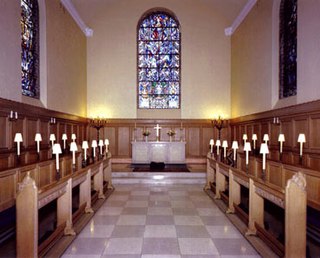
The Robin Chapel is an ecumenical Christian place of worship in the Craigmillar area of Edinburgh, Scotland. It was built in memory of Lieutenant Robin Tudsbery, who was killed in the closing days of World War II. The chapel sits within the grounds of the Thistle Foundation, a housing complex originally built for disabled armed forces personnel.
43. Scottish National War Memorial
The Scottish National War Memorial is located in Edinburgh Castle and commemorates Scottish service personnel and civilians, and those serving with Scottish regiments, who died in the two world wars and subsequent conflicts. Its chief architect was Robert Lorimer, commissioned in 1919, and the monument was formally opened in 1927. It is housed in a redeveloped barrack block in Crown Square, at the heart of the castle, and incorporates numerous monuments.
44. Nelson Monument
The Nelson Monument is a commemorative tower in honour of Vice Admiral Horatio Nelson, located in Edinburgh, Scotland. It is situated on top of Calton Hill, and provides a dramatic termination to the vista along Princes Street from the west. The monument was built between 1807 and 1816 to commemorate Nelson's victory over the French and Spanish fleets at the Battle of Trafalgar in 1805, and his own death at the same battle. In 1852 a mechanized time ball was added, as a time signal to shipping in Leith harbour. The time ball is synchronized with the One O'Clock Gun firing from Edinburgh Castle. The monument was restored in 2009.
45. Festival Theatre
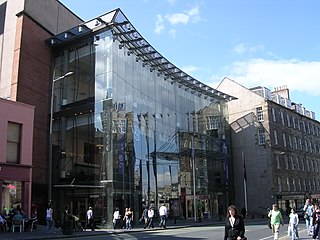
The Edinburgh Festival Theatre is a performing arts venue located on Nicolson Street in Edinburgh, Scotland. It is used primarily for performances of opera and ballet, large-scale musical events, and touring groups. After its most recent renovation in 1994, it seats 1,915. It is one of the major venues of the annual summer Edinburgh International Festival and is the Edinburgh venue for the Scottish Opera and the Scottish Ballet.
46. Rosebank Cemetery
Rosebank Cemetery is a 19th-century cemetery in Edinburgh, Scotland, at the junction of Pilrig Street and Broughton Road in the Pilrig area, close to the historical boundary of Leith. The cemetery is protected as a category C listed building.
47. Royal Lyceum Theatre
The Royal Lyceum Theatre is a 658-seat theatre in the city of Edinburgh, Scotland, named after the Theatre Royal Lyceum and English Opera House, the residence at the time of legendary Shakespearean actor Henry Irving. It was built in 1883 by architect C. J. Phipps at a cost of £17,000 on behalf of James B. Howard and Fred. W. P. Wyndham, two theatrical managers and performers whose partnership became the renowned Howard & Wyndham Ltd created in 1895 by Michael Simons of Glasgow.
48. Scottish National Gallery of Modern Art Two
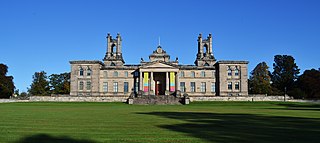
Modern Two, formerly the Dean Gallery, in Edinburgh, is one of the two buildings housing the Scottish National Gallery of Modern Art, one of Scotland's national art galleries. It is operated by National Galleries Scotland. It is twinned with Modern One which lies on the opposite side of Belford Road.
49. North Leith Parish Church
North Leith Parish Church was a congregation of the Church of Scotland, within the Presbytery of Edinburgh. It served part of Leith, formerly an independent burgh and since 1920 a part of the city of Edinburgh, Scotland.
50. The Hub
The Hub is a public arts and events building in the centre of Edinburgh, Scotland. Located at the top of the Royal Mile, it is a prominent landmark as its tall Gothic spire is the highest point in central Edinburgh, and towers over the surrounding buildings below Edinburgh Castle.
51. Blackford Hill
Blackford Hill 164 metres (538 ft) is a hill in Edinburgh, the capital city of Scotland. It is in the area of Blackford, between Morningside, and the Braid Hills. Together with the Hermitage of Braid, it comprises the 60.3 hectares Hermitage of Braid and Blackford Hill Local Nature Reserve, within which lies Hermitage House.
52. Corstorphine Old Parish Church
Corstorphine Old Parish Church, formerly St. John's Collegiate Church, is at the old centre of Corstorphine, a village incorporated to the west area of Edinburgh. Built in the 15th century, in the churchyard of a 12th-century or earlier chapel, the former collegiate church was listed category A by Historic Scotland on 14 December 1970.
53. St Margaret's Chapel
St Margaret's Chapel, in Edinburgh Castle, is the oldest surviving building in Edinburgh, Scotland. An example of Romanesque architecture, it is a category A listed building. It was constructed in the 12th century, but fell into disuse after the Reformation. In the 19th century the chapel was restored and today is cared for by the St Margaret's Chapel Guild.
54. National War Museum
The National War Museum is a museum dedicated to warfare, which is located inside Edinburgh Castle in Edinburgh, Scotland. Opened in 1933 in a converted 18th-century ordnance storehouse, the museum is run by the National Museums Scotland and covers 400 years of Scotland at war from the 17th century through permanent exhibits and special exhibitions.
55. Royal Observatory, Edinburgh
The Royal Observatory, Edinburgh (ROE) is an astronomical institution located on Blackford Hill in Edinburgh. The site is owned by the Science and Technology Facilities Council (STFC). The ROE comprises the UK Astronomy Technology Centre (UK ATC) of STFC, the Institute for Astronomy of the School of Physics and Astronomy of the University of Edinburgh, and the ROE Visitor Centre.
56. Writers' Museum
The Writers’ Museum, housed in Lady Stair's House at the Lawnmarket on the Royal Mile in Edinburgh, presents the lives of three of the foremost Scottish writers: Robert Burns, Walter Scott and Robert Louis Stevenson. Run by the City of Edinburgh Council, the collection includes portraits, works and personal objects. Beside the museum lies the Makars' Court, the country's emerging national literary monument.
57. Barnbougle Castle
Barnbougle Castle is a historic tower house on the southern shore of the Firth of Forth, between Cramond and Queensferry, and within the parish of Dalmeny. It lies within the Earl of Rosebery's estate, just north-west of Dalmeny House. Although its history goes back to the 13th century, the present castle is the result of rebuilding in 1881 by the 5th Earl of Rosebery, who served as Prime Minister from 1894 to 1895.
58. St Cecilia's Hall
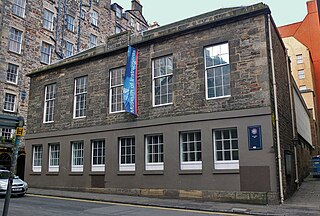
St Cecilia's Hall is a small concert hall and museum in the city of Edinburgh, Scotland, in the United Kingdom. It is on the corner of Niddry Street and the Cowgate, about 168 metres (551 ft) south of the Royal Mile. The hall dates from 1763 and was the first purpose-built concert hall in Scotland. It is a Category A listed building.
59. Assembly Rooms
The Assembly Rooms are meeting halls in central Edinburgh, Scotland. Originally solely a meeting place for social gatherings, it is now also used as an arts venue and for public events, including the Edinburgh Festival Fringe and the Hogmanay celebrations. There are four rooms, with moveable chairs or tables, that are used year-round and are available for private functions: Music Hall, Ballroom, Supper Room and Edinburgh Suite.
60. St Paul's & St George's
St Paul's and St George's Church is an evangelical church of the Scottish Episcopal Church in central Edinburgh, Scotland. It is located on the corner of Broughton Street and York Place in the east end of Edinburgh's New Town, and is protected as a category A listed building.
61. Dugald Stewart Monument
The Dugald Stewart Monument is a memorial to the Scottish philosopher Dugald Stewart (1753–1828). It is situated on Calton Hill overlooking the city of Edinburgh and was designed by Scottish architect William Henry Playfair.
62. Mayfield Salisbury Parish Church
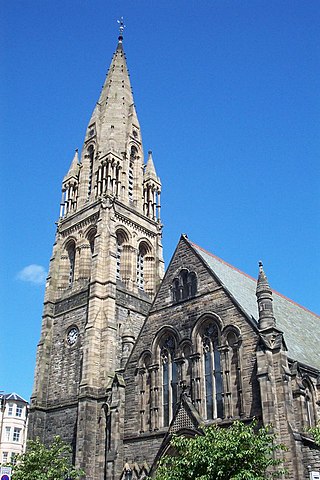
Mayfield Salisbury Church, formerly Mayfield North Church and also informally known as Mayfield Church, is a parish church of the Church of Scotland. It is located in the Newington district of Edinburgh, approximately 1.5 miles (2.4 km) south of the city centre. The building was designed by Hippolyte Blanc, with construction taking place between 1875 and 1879. Extensive renovations were carried out in 1969 following a major fire which destroyed most of the roof. The building is noted for the range and quality of its stained glass. The present congregation is the product of several mergers, most recently of Mayfield Church with Salisbury Church in 1993.
63. Political Martyrs' Monument
The Political Martyrs Monument, located in the Old Calton Burial Ground on Calton Hill, Edinburgh, commemorates five political reformists from the late 18th and early 19th centuries. Designed by Thomas Hamilton and erected in 1844, it is a 90 ft (27 m) tall obelisk on a square-plan base plinth, all constructed in ashlar sandstone blocks. As part of the Burial Ground it is Category A listed.
64. The King's Gallery
The King's Gallery, previously known as the Queen's Gallery. is an art gallery in Edinburgh, Scotland. It forms part of the Palace of Holyroodhouse complex. It was opened in 2002 by Queen Elizabeth II, and exhibits works from the Royal Collection.
65. Carlowrie Castle
Carlowrie Castle was built in the Scottish Baronial style between 1852 and 1855 on the outskirts of Kirkliston, a town approximately 10 miles from Edinburgh, Scotland. It has only ever belonged to two families: the Hutchison family, who built it, and the Marshall family, who acquired it 130 years later.
66. Corstorphine Hill
Corstorphine Hill is a low ridge-shaped hill rising above the western suburbs of Edinburgh, Scotland. Although there has been residential and commercial development on its lower slopes, especially in the south and west, most of the hill is occupied by a local nature reserve, consisting of extensive broadleaf woodland, accessible to the public.
67. Merchiston Tower
Merchiston Tower, also known as Merchiston Castle, was probably built by Alexander Napier, the 2nd Laird of Merchiston around 1454. It serves as the seat for Clan Napier. It was the home of John Napier, the 8th Laird of Merchiston and the inventor of logarithms, who was born there in 1550.
68. Slateford Aqueduct
The Slateford Aqueduct is a navigable aqueduct that carries the Union Canal over the Water of Leith at Slateford, Edinburgh, Scotland. Completed in 1822, it has eight arches and spans a length of 500 feet (150 m).
69. The Edinburgh Hebrew Congregation
The Edinburgh Synagogue is an Orthodox Jewish congregation and synagogue, located at 4 Salisbury Road in the Newington area of Edinburgh, Scotland, in the United Kingdom. Established in 1816 as the Edinburgh Hebrew Congregation, the congregation worships in the Ashkenazi rite.
70. Talbot Rice Gallery
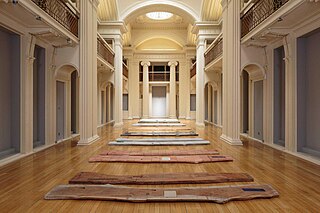
Talbot Rice Gallery is the public art gallery of the University of Edinburgh in Scotland and part of Edinburgh College of Art. The building has three exhibition spaces, including a contemporary white cube gallery and a neoclassical space that was formerly a 19th-century natural history museum. Its programme includes a number of exhibitions each year, with solo shows providing international artists with access to University research and collections, whilst conceptual group shows foreground key political and social issues. Talbot Rice Gallery is open to the public and admission free.
71. Museum of Childhood
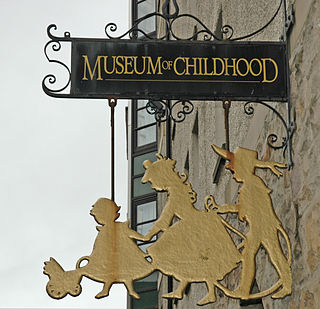
The Museum of Childhood is a museum which houses a collection of children's toys and playthings, situated on the Royal Mile, in Edinburgh, Scotland. It was the first museum in the world to specialise in the history of childhood.
72. St Patrick's RC Church
St Patrick's Church is a Roman Catholic Parish church in the Cowgate part of Old Town, Edinburgh, Scotland. It was built from 1771 to 1774, and became a Catholic church in 1856. The facade of the church was designed by Reginald Fairlie in 1929. It is situated between South Gray's Close and St Mary's Street north of Cowgate and south of the Royal Mile. It is a category B listed building.
73. Leith Theatre
Leith Theatre is a theatre located on Ferry Road in Edinburgh, Scotland. It opened in 1932 and ceased operation in 1988. Following the efforts of Leith Theatre Trust, fundraising and campaigning is currently underway to support Leith Theatre's redevelopment and eventual full reopening as an arts and community venue.
74. Church of the Sacred Heart
Sacred Heart, Edinburgh, formally known as the Catholic Church of the Sacred Heart of Jesus, is a Roman Catholic church run by the Society of Jesus, close to the city centre of Edinburgh, Scotland, United Kingdom. It is situated in Lauriston, midway between the Grassmarket and Tollcross, on the edge of Edinburgh’s historic Old Town. The church building was opened in 1860 and is a category A listed building.
75. Gilmerton Cove
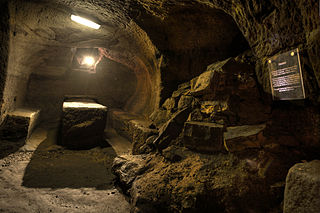
Gilmerton Cove is a series of underground passageways and chambers hand-carved from sandstone located beneath the streets of Gilmerton, an ex-mining village, now a southeastern suburb of Edinburgh, Scotland. There has been much speculation about the origins of the Cove and its purpose.
76. Georgian House
The Georgian House is an 18th-century townhouse situated at No. 7 Charlotte Square in the heart of the historic New Town of the city of Edinburgh, Scotland. It has been restored and furnished by the National Trust for Scotland, and is operated as a popular tourist attraction, with over 40,000 visitors annually.
Wikipedia: The Georgian House, Edinburgh (EN), Website, Opening Hours
77. Castle Rock
Castle Rock is a volcanic plug in the middle of Edinburgh upon which Edinburgh Castle sits. The rock is estimated to have formed some 350 million years ago during the early Carboniferous period. It is the remains of a volcanic pipe which cut through the surrounding sedimentary rock, before cooling to form very hard dolerite, a coarser-grained equivalent of basalt. Subsequent glacial erosion was resisted more by the dolerite, which protected the softer rock to the east, leaving a crag and tail formation.
78. Scottish American War Memorial
The Scottish American Memorial, or Scots American War Memorial, is in West Princes Street Gardens in Edinburgh. It was called "The Call 1914", and it was erected in 1927 and shows a kilted infantryman looking towards Castle Rock. Behind the main statue is a frieze showing queues of men answering the call by following a kilted pipe band. The memorial was given by Scottish-Americans to honour Scots who had served in the first World War.
79. Church Hill Theatre
Church Hill Theatre is a Category B listed pink sandstone former church and current theatre venue owned by the Edinburgh City Council. Built originally as Morningside Free Church, the council purchased it in 1960. After undergoing an extensive refurbishment, it re-opened in August 2006. It is managed by the team operating the Assembly Rooms.
80. Our Lady of Pochaev and St Andrew's
Our Lady of Pochayiv and St Andrew's Ukrainian Catholic Church is situated on Dalmeny Street, Leith in Edinburgh. It is one of the few Ukrainian Greek Catholic parish churches in Scotland. It is a church in the only Eastern Catholic eparchy in Great Britain, the Ukrainian Catholic Eparchy of the Holy Family of London. It is a Category B listed building.
81. Reid Concert Hall
The Reid Concert Hall is a small music venue in the city of Edinburgh, Scotland. It is located in the south-western corner of Bristo Square about 0.53 kilometres (0.33 mi) south of the Royal Mile, and is part of the University of Edinburgh. Originally opened in 1859 as the Reid School of Music by the university's professor of music, John Donaldson (1789-1865), it was designed by the Scottish Architect David Cousin and is a Category A listed building. The hall is named after General John Reid, an army officer and musician who founded the Chair of Music at the university. The Reid Concerts take place every 13 February.
82. Bellevue Chapel
Canonmills is a district of Edinburgh, the capital of Scotland. It lies to the south east of the Royal Botanic Garden at Inverleith, east of Stockbridge and west of Bellevue, in a low hollow north of Edinburgh's New Town. The area was formerly a loch which was drained in three phases in the 18th and 19th centuries, disappearing finally in 1865.
83. St Mary's Star of the Sea Church
St Mary Star of the Sea (Leith) Church is a Roman Catholic parish church in Edinburgh, Scotland. It is situated on Constitution Street in the Leith district and staffed by the Missionary Oblates of Mary Immaculate.
84. Martello Tower, Leith Docks
The Tally Toor is the local name for a Martello tower in Leith, Edinburgh, Scotland. It is one of Scotland's three Martello towers, the other two being at Hackness and Crockness in Orkney. Originally built offshore on a rocky outcrop called the Mussel Cape Rocks, the land around it was subsequently reclaimed, and the building now lies, half-buried, in an industrial area on the eastern breakwater of Leith Docks.
85. Jupiter Artland
Jupiter Artland is a contemporary sculpture park and art gallery outside the city of Edinburgh, Scotland. Jupiter Artland Foundation is a registered charity that is supported by classes, workshops, events, ticket sales, and donations. It is open to general visits between May and September.
86. Saint Catherine's Argyle
St. Catherine's Argyle, or St. Cath's, is a Church of Scotland church located in the Grange, Edinburgh. The Scottish churchman and poet Horatius Bonar was its first minister. The present St Catherine's Argyle congregation was formed in 1968 from the union of two local churches - St Catherine's in the Grange and the Argyle Place United Presbyterian Church.
87. Cramond Kirk
Cramond Kirk is a church situated in the middle area Cramond parish, in the north west of Edinburgh, Scotland. Built on the site of an old Roman fort, parts of the Cramond Kirk building date back to the fourteenth century and the church tower is considered to be the oldest part.
88. The Scotch Whisky Experience
The Scotch Whisky Experience is a whisky visitor attraction located on Castlehill in the Old Town of Edinburgh, immediately adjacent to the esplanade of Edinburgh Castle. The centre offers tours and whisky tutoring sessions, alongside a shop, corporate spaces and Amber Restaurant & Whisky Bar.
89. Museum on the Mound
The Museum on the Mound is a museum in Edinburgh, Scotland, that focuses on money, coinage and economics. It is located in the Bank of Scotland Head Office building on The Mound. It has more than 50,000 visitors per year.
90. Newbridge Inn
The Newbridge Inn is a public house in Newbridge, a suburban village to the west of Edinburgh, Scotland. The inn was founded in 1683. The present building is dated 1895 and is a category C(S) listed building. It is located at the corner of Old Liston Road and Bridge Street, which was formerly the main route from Edinburgh to Glasgow.
91. The People's Story Museum
The People's Story Museum is located in the historic Canongate Tolbooth, and features collections that narrate the story of the working-class people of Edinburgh from the late 18th century to the present day. The museum achieves this through the use of oral history, reminiscence, and written sources.
Wikipedia: The People's Story Museum (EN), Website, Facebook
92. The Royal Scots Dragoon Guards Museum
The Royal Scots Dragoon Guards Museum is a regimental museum displaying the collections of the Royal Scots Dragoon Guards and its predecessor regiments. It is based in the New Barracks at Edinburgh Castle in Scotland.
93. The Royal Scots Regimental Museum
The Museum of the Royal Scots and the Royal Regiment of Scotland is a regimental museum displaying the collections of the Royal Scots and the Royal Regiment of Scotland. It is based in the Royal Scots drill hall at Edinburgh Castle in Scotland.
Wikipedia: The Museum of the Royal Scots (The Royal Regiment) and the Royal Regiment of Scotland (EN), Website
94. City Art Centre
The City Art Centre is part of the Museums & Galleries Edinburgh, which sits under the Culture directorate of the City of Edinburgh Council. The City Art Centre has a collection which include historic and modern Scottish painting and photography, as well as contemporary art and craft. It is an exhibition based venue with no permanent displays.
95. Gordon Aikman Lecture Theatre
The Gordon Aikman Lecture Theatre is a category B listed performing arts and lecture theatre located in the historic George Square in Edinburgh. Primarily operated as a lecture theatre for the University of Edinburgh, it is also used for general theatre performances, as well as being a designated Edinburgh Fringe Festival venue.
96. Adam House
Adam House is a Category B listed building in Edinburgh, Scotland. It is owned by the University of Edinburgh, and used as studio spaces for the architecture school. It consists of 4 studio spaces and a lecture theatre.
97. Lochend Park
Lochend Park is a public park in Edinburgh, Scotland. It is situated in the Lochend / Restalrig area, next to Lochend Castle and near Meadowbank Stadium. The loch with its wide range of waterfowl is the main attraction, but there are also historical buildings, a children's play area, and sports areas. The park was awarded a Green Flag in 2012 in recognition of it being a quality greenspace. Within the park there is a 16th-century doocot which is Category B listed.
98. Pleasance Theatre
The Pleasance is a theatre, bar, sports and recreation complex in Edinburgh, Scotland, situated on a street of the same name. It is owned by the University of Edinburgh, and for nine months of the year it serves the Edinburgh University Students' Association as a societies centre, sports complex, student union bar and entertainment venue.
99. Symposium Hall
The King Khalid Building is an event space in the Southside, Edinburgh, Scotland, owned and operated by the Royal College of Surgeons of Edinburgh. The building was constructed Roxburgh Free Church in 1847 and converted to its current use in 1982.
100. St Columba's by the Castle
St Columba's-by-the-Castle is a congregation of the Scottish Episcopal Church in central Edinburgh, Scotland. The church is located close to Edinburgh Castle, on the south slope of Castle Hill, and is protected as a category B listed building.
Share
How likely are you to recommend us?
Disclaimer Please be aware of your surroundings and do not enter private property. We are not liable for any damages that occur during the tours.
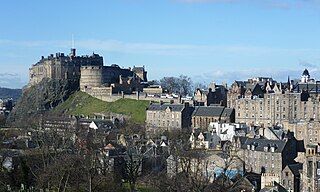
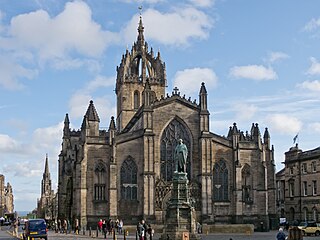
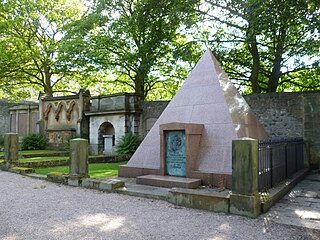
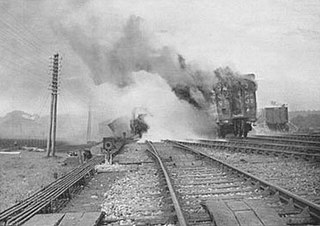
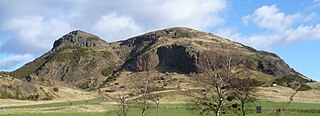
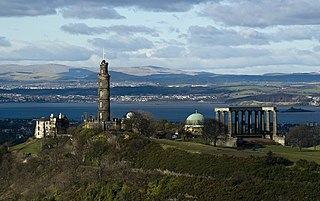
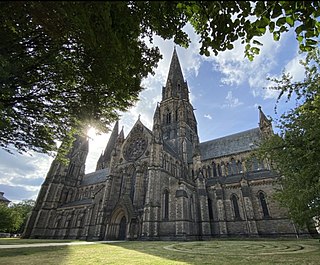
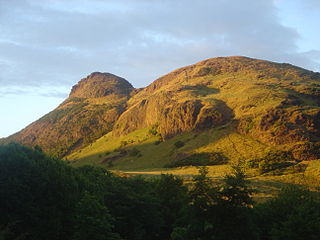
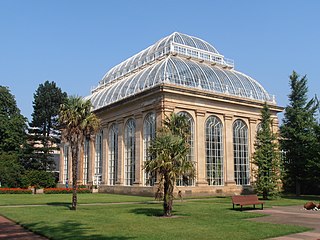
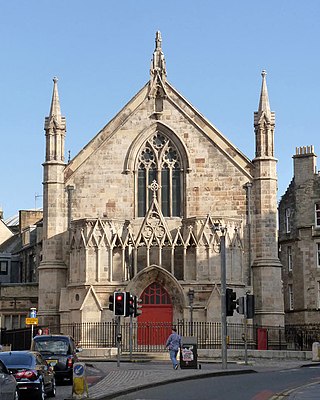
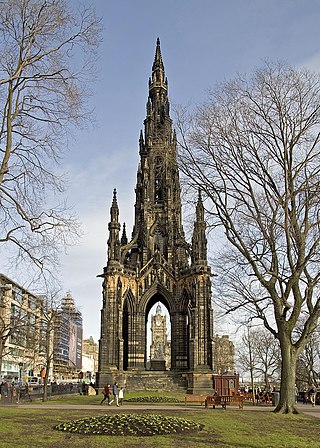
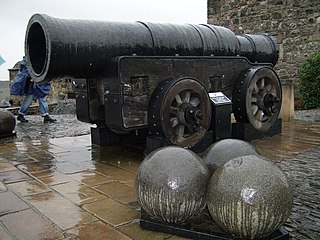

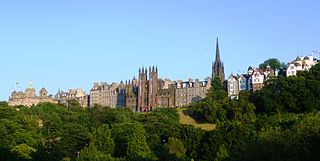
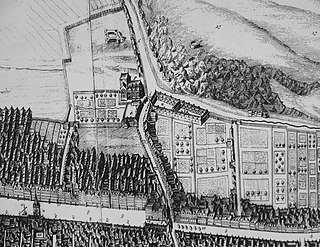
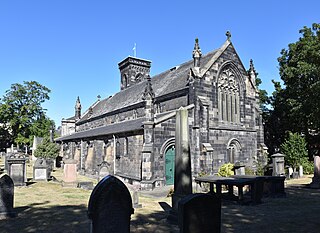
.jpg)
